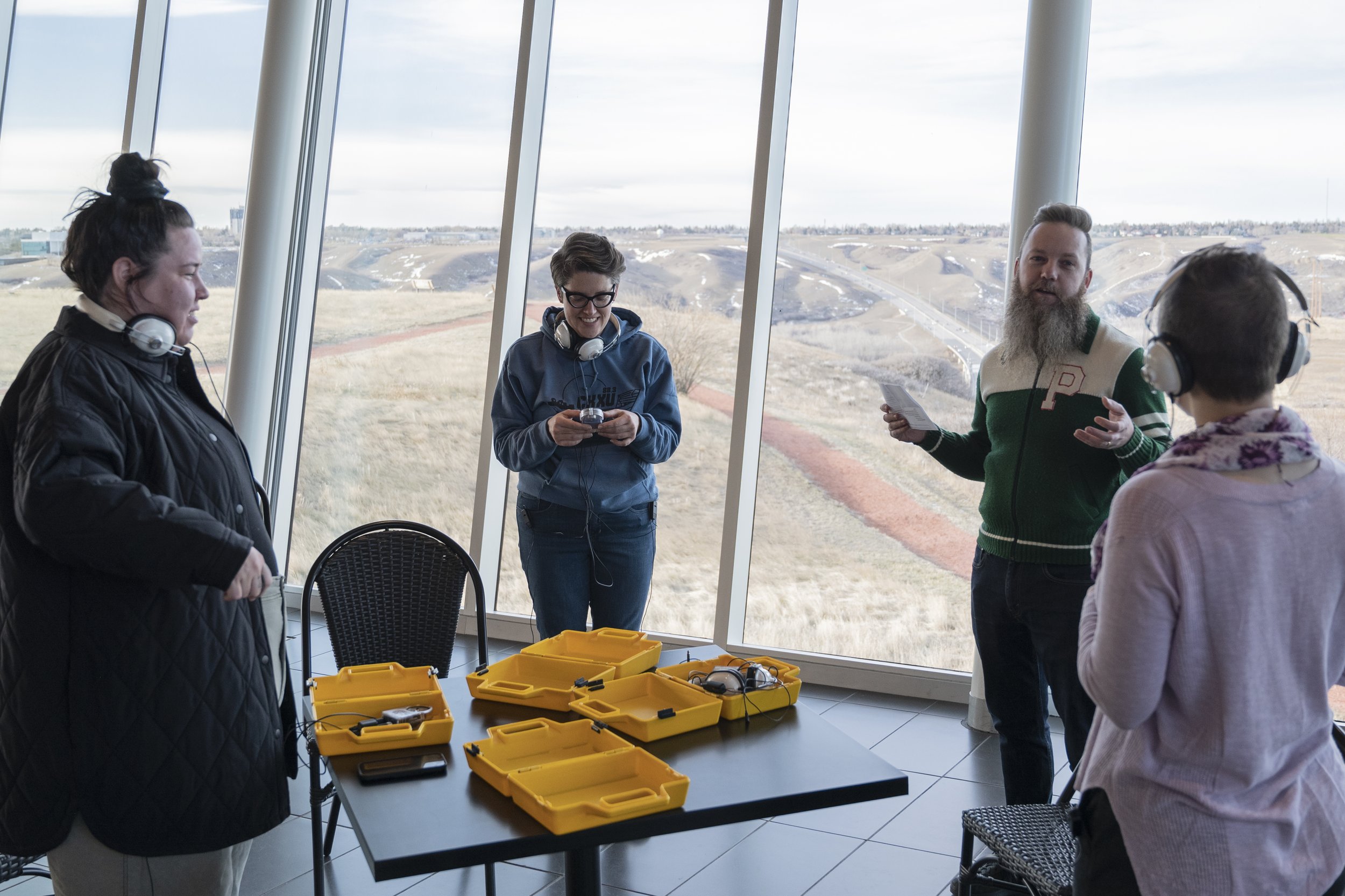New Exhibition Explores How We Interact with Sound
Members of the media are invited to an interview opportunity with members of the exhibition development team for The Politics of Sound, a new exhibit opening December 3, 2022. Please join us Friday, December 2 at 10:30 am at the Galt Museum & Archives at 502 1 Street S, Lethbridge, AB. Curator Tyler J Stewart and artist Marjie Crop Eared Wolf will both be in attendance to provide interviews and answer further questions.
Lethbridge, AB—In what ways do your ears control your actions? This is just one of many thought-provoking questions asked within The Politics of Sound, a new temporary exhibition at the Galt Museum & Archives | Akaisamitohkanao’pa.
On display until May 7, 2023, this exhibition aims to demonstrate how attentive listening can be a way to bring communities together in understanding and empathy. Through a combination of contemporary artworks and historical artifacts, The Politics of Sound explores the potential of sound to create new understandings and challenges visitors to contemplate their own position within our shared soundscape.
“We live in a world of sound, but often don’t pay much attention to how it affects us on a daily basis,” says Tyler Stewart, curator for the Galt Museum & Archives. “It’s important to pay attention to how sound affects our everyday actions in many different ways we typically take for granted.”
Curtain by Adam Basanta.
The exhibition features both historical artifacts from the Galt Museum collection, as well as sound-based artworks by six different contemporary artists from around the world: jamilah malika abu-bakare, Adam Basanta, Marjie Crop Eared Wolf, Maskull Lasserre, Benny Nemer and Jessica Thompson. This diverse group of artists represent the forefront of sound and media art experimentation.
“The artifacts and artworks in this exhibition ask us to consider how and why we value some voices and sounds over others, and for what reasons,” Stewart explains. “The experience of sound is always influenced by gender, race, sexuality and other factors, so it’s important for us to examine how who we are determines what we hear.”
While some artists in the exhibition come from as far away as Europe and the United States, there is local content as well. Kainai artist Marjie Crop Eared Wolf’s contribution to the exhibition examines how Indigenous languages have been affected by colonial structures.
Components of an installation entitled Niitsi’powahsin Secwepemctsín by Marjie Crop Eared Wolf.
“[The Politics of Sound] is an outlet for me, to work on learning my languages, Secwepemctsín and Niitsi’powahsin,” explains Crop Eared Wolf. “Learning the language is so important for me and other young people, because we are among the first generation who don’t speak our language fluently. A factor that is hugely responsible for this is the residential schools, where First Nations children were forbidden to speak their languages.”
For Crop Eared Wolf, the exhibition is an opportunity to bring Secwepemctsín and Niitsi’powahsin into public places, something that was historically not allowed. “My hope is that through my artwork, audiences will be knowledgeable about the importance of First Nations languages and the support efforts to safeguard them for future generations. This includes the entire public: First Nations and Non-First Nations.”
The Politics of Sound features many interactive opportunities, with some artworks containing elements designed to be taken home, while others can be worn and taken for a walk. Visitors to the exhibition will find many ways to engage deeply and conduct their own sound experiments. Exciting community programs are also planned throughout the exhibition’s duration to further understanding of the role sound plays in our society. Several Soundscape Walking Tours will activate new listening practices in its participants using two of the exhibition’s interactive artworks, Jessica Thompson’s Walking Machine and Adam Basanta’s Plugs (the most important thing is). These artworks allow the users to listen to their surroundings and hear themselves move in ways they’ve never heard before.
Curator Tyler Stewart instructs in the use of Jessica Thompson’s Walking Machine.
For this temporary exhibition, accessibility supports have also been created to improve the experience of visitors with limited vision and limited hearing. “We are striving to better serve all visitors with our exhibitions and programs,” explains Stewart. “This exhibition offers an opportunity for us to pilot new supports and guided tours for visitors who may not have felt welcomed in the past.” These tools include a text-based guide and an audio-based guide, and will be available on the exhibit webpage on the Galt’s website for the exhibit’s duration.
A special launch event will take place on December 8 at 7:30 pm following the members-only sneak peek. The evening will feature a cash bar, introductory remarks, a live musical performance by singer-songwriter Richard Inman, informal tours of the exhibit and opportunities to speak with curators and participants.
—30—
This media release can be found at www.galtmuseum.com/news.
Media Contacts
Tyler J Stewart (he/him)
Curator
tyler.stewart@galtmuseum.com
403.320.3907





